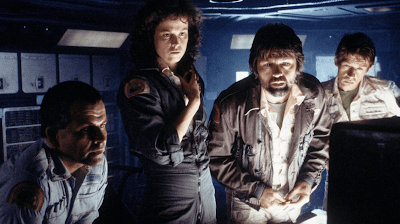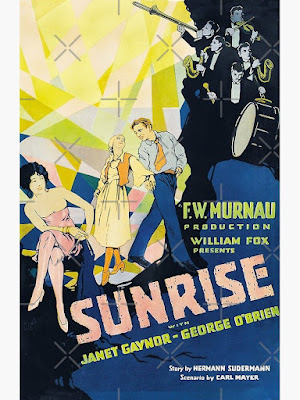Writing about Gone with the Wind poses an interesting dilemma. On the one hand, it’s one of the most accomplished epics in film history, with great performances and astonishing visuals that keep audiences returning to the movie again and again. On the other hand, it is clearly sympathetic to the Southern side of the Civil War, and its depictions of African Americans and Yankees and (at times) even Southerners are remarkably stereotypical and offensive. It’s like watching The Birth of a Nation. While you might admire the technical accomplishments of the film, it’s very tough to sit through some of the more objectionable material.
So how do you tackle an examination of such a film? I’d start by noting that I’ve always felt that the focus is less upon the Civil War and Reconstruction – although those pivotal historical periods are certainly important to the plot and provide its central context – and more upon the story of a remarkable woman, Scarlett O’Hara. It’s one of the greatest roles an actress could have, and Vivien Leigh is just perfection as one of the most complex and complicated and contradictory heroines in film. We watch as Scarlett marries two men she doesn’t love, the first as a means to make her purported lover jealous and the second to secure a safe financial future for herself and her family. When she finally does marry someone she should love (and ultimately does), she takes so many opportunities to sabotage her happiness by continuing to pine for Ashley Wilkes (a rather wan Leslie Howard) instead of just loving the man who loves her, Rhett Butler (Clark Gable, never better).
Everything in the movie indicates that Scarlett should be with Rhett, yet she keeps missing the cues that the universe seems to be sending to her. When her first husband, Charles Hamilton, dies from measles before he can even join a battle, her only fun as a very unrepentant widow is when Rhett shows up and “bids” to dance with her. Her second husband, Frank Kennedy, gets shot in the head when he and some of the other men are trying to scare the residents of a “shantytown” where Scarlett was attacked. (It seems pretty clear to me that Frank and the other men are a part of the Ku Klux Klan, but the film doesn’t directly state their affiliation.) Her way of mourning Frank’s death involves drinking heavily, not out of sadness over his death but more over the fact that she’s still young and already twice widowed.
Even the man Scarlett longs for throughout the movie is rather a disappointment. What, exactly, does she see in Ashley? He’s honorable and stoic and, well, boring. He’s not even especially handsome or dapper. I don’t get what his cousin-wife Melanie sees in him either. Howard is not the most expressive actor, which perhaps explains why he was one of few major performers in the cast not to be nominated for an Oscar. Gable’s Butler, by contrast, is fun and exciting and just enough of a “bad guy” to make him immensely more attractive. He certainly makes his intentions clear from almost the first time we see him on screen, and his roguishness is just the kind of spark that someone like Scarlett needs in her life.
The film’s Oscar-winning screenplay is filled with great lines throughout the story. “Frankly, my dear, I don’t give a damn” is justifiably famous, and “As God is my witness, I’ll never go hungry again” serves as a great finish to the first half of the film. Gable gets most of the best lines, honestly, and he knows just how to deliver them with the correct dose of smirk and slyness. If there’s a second place for best line delivery, it would have to go to Hattie McDaniel, who takes the stock character of Mammy and infuses it with knowing facial expressions and sharpness. She and Gable, Leigh, and Olivia de Havilland as Melanie Hamilton Wilkes were all nominated for their performances, and McDaniel and Leigh richly deserved their Oscar wins.
Given the film’s length – almost four hours if you watch the version with the entrance and exit music and the intermission and entr’acte music – there’s time to showcase some great visuals. The siege of Atlanta (and Rhett and Scarlett’s escape with Melanie and her baby and Prissy through the burning of much of it) is quite spectacular. Similarly, when Scarlett arrives at a makeshift hospital to get the doctor’s help in delivering Melanie’s baby, the reverse zoom that keeps expanding our view of the dying and the dead is an impressive accomplishment. We sometimes forget that CGI has not always been available, so the ability to wrangle huge numbers of actual people on screen is a skill that many directors could not manage, but Victor Fleming (plus George Cukor and Sam Wood, the other directors credited with working on the film for a time) works wonders with his crowds. There’s an energy and an excitement to those big moments.
The scale of the production was massive, and the production design must have been a monumental undertaking. The filmmakers needed the interiors and exteriors of several Southern mansions, and they needed to make the town of Atlanta just so they could burn much of it down. Even the little touches that help to create a clear sense of what the interiors of the homes would look like are carefully done. I’ve always marveled at the sequence involving the women having to take a nap in the middle of the afternoon just so they won’t be too tired for the barbecue later that evening. The number of beds and large fans alone is mind-boggling. I’d also like to mention the costumes by Walter Plunkett. Even though Costume Design wasn’t an Academy Award category when Gone with the Wind was made, he surely would have been a contender for the range of dresses that Scarlett alone has to wear.
The film does spend too much of its time discussing the “Southern way of life,” which is really just code for slavery. Before the Civil War begins, the white Southern characters (well, the men, primarily) discuss the possibility of their way of life disappearing. During the war and the Reconstruction period that followed, Ashley, in particular, expresses a sense of loss for the way things used to be. Gone with the Wind really does take that silly myth about “moonlight and magnolias” before the war and devotes far too much energy to trying to make us care that slavery has ended. Having read the Margaret Mitchell novel upon which the film was based – and which is even longer than the film, if you can believe that – I know that the filmmakers were being dutifully respectful to the text, but they ended up making a film that doesn’t particularly age well in those moments.
Likewise, most of the depictions of the people who were enslaved are very limited and resort too easily to stereotypes. It’s only through the talent of actors like McDaniel that some dignity emerges. Otherwise, we’re left with characters like Pork (Albert Polk) and Prissy (Butterfly McQueen), who have very little to work with in terms of the story to make much of an impression. The actor who plays Big Sam (Everett Brown) seems only to appear when Scarlett (the film’s primary white woman) needs rescuing. I’ve often wondered why Mammy, Pork, and Prissy continue to stay with their white former “owners” after the war ends. When Prissy sees the new mansion that Rhett builds for Scarlett in Atlanta, she says, “We’s rich now.” No, they’re not. They’re still basically enslaved, but their loyalty to their former masters is meant to suggest something (ridiculous) about how they were treated in slavery. Watching the film now is tough when you see how what the movie often does to its African American characters, but I have a feeling that even in 1939, it was tough to watch some of these particularly offensive moments. It is/was certainly a product of its time.
The film does a better job with some of its minor white characters. I’d single out Ona Munson’s performance as Belle Watling. Of course, the filmmakers couldn’t directly state that Belle is a prostitute in 1939, but it’s clear from the way that she’s dressed in red and heavily made up that she’s not a “nurse” in the traditional sense. Munson is so direct and fresh, though, that we start to sympathize with her. In her few moments on screen, we learn so much about her character’s life and what she’s endured. She’s a tough woman who manages to convey just how difficult it was for a woman during the time period Gone with the Wind covers.
And that’s a good point at which to return to Scarlett O’Hara. She has the instincts of a solid business owner. She, unlike her second husband, knows that the lumber business is where the money will be as the South starts to rebuild. She also manages to meet whatever difficulties she faces with a straightforward sense of purpose. She delivers a baby without a doctor’s assistance, she turns around the fate of Tara by making a shrewd business decision even at great personal cost, and she even kills a Yankee soldier who tries to steal from her. She also faces the loss of her beloved mother, the death of two husbands, and the accidental death of her only child. The film’s focus on the remarkable life of this central character is perhaps the key to its lingering impact.
Oscar Wins: Outstanding Production, Best Actress (Vivian Leigh), Best Actress in a Supporting Role (Hattie McDaniel), Best Directing, Best Screenplay, Best Color Cinematography, Best Art Direction, and Best Film Editing
Special Award: John Cameron Menzies for “outstanding achievement in the use of color for the enhancement of dramatic mood in the production of Gone with the Wind”
Technical Achievement Award: R.D. Musgrave for “pioneering in the use of coordinated equipment in the production Gone with the Wind”
Other Oscar Nominations: Best Actor (Clark Gable),
Best Actress in a Supporting Role (Olivia de Havilland), Best Sound Recording,
Best Special Effects, and Best Original Score












